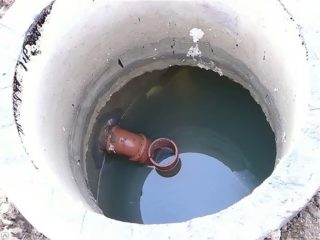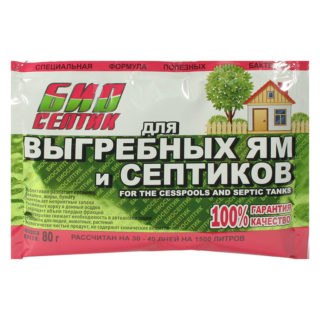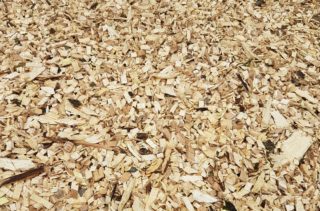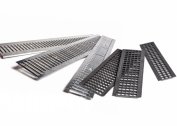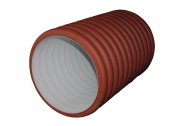Cesspools are equipped with a sewer system in the country or in a small private house. The construction of a sewage treatment plant does not require much time, effort and finance. But the cesspool needs to be cleaned systematically. The easiest way is to call the sewer pumping equipment. But it so happens that there is no way to access the toilet. It is difficult to pump out sewage by the pump itself, they need to be drained somewhere without contaminating the earth. In addition, sludge settles on the walls of the sewer tank. They solve the problem through chemical and biological products, as well as folk remedies that allow you to clean the sewer pit in a private house quickly and without pumping.
How to understand that it’s time to clean the cesspool
A mixture of excrement, food waste and household chemicals can harm the health of residents of the house if a toxic substance enters the ground. Overfilling the pit with waste products leads to the formation of toxic gases. They cause not only stench, but also poisoning. It is important to clean the structure in a timely manner.
Signs that it’s time to clean the cesspool:
- the occurrence of stench;
- mud accumulation at the bottom;
- swarms of flies over the drain hole;
- slow water withdrawal in plumbing fixtures brought to the cesspool.
On average, an untight pit of 1.5–2 cubic meters can be used without cleaning for up to ten years. However, throughput decreases over time. It is easier to eliminate a small volume once a year than to remove a large amount after a decade. In addition, cesspools without a bottom are prohibited.
How to clean a cesspool without pumping
If calling a cesspool machine is not possible, other methods can be chosen to clean the cesspool.
Chemical compounds
They decompose the waste and remove the disgusting smell. Use only approved formulations. Formaldehydes and quicklime are banned because they pose a danger to the environment and harm to the health of residents of the house.
The following compounds are suitable for cleansing the pit:
- Ammonium compounds. They are inexpensive, but the discharge of clarified water into the soil is impossible. Will have to call specialists for disposal. If there is an impurity in household waste water, the efficiency is reduced. It is not recommended to use in cesspools with metal elements due to the risk of their destruction.
- Nitrate (nitrogen) oxidizing agents. Harmless but expensive. They are similar in composition to nitrogen fertilizers. Not susceptible to household chemicals in sewage. In addition to the decomposition of biological impurities, remove an unpleasant odor.
- Acid cleaners. According to the principle of action, they are similar to nitrogen compounds. Suitable for dissolving sludge, solid suspensions and neutralizing harmful bacteria. It is not permissible to use in structures with plastic walls and in open cesspools.
If the problem is not in a crowded pit, but in clogged sewer lines, use caustic soda.
Chemical compounds are not afraid of frosts and sudden temperature changes. They are released in the form of tablets, liquids, granules and powder. The latter are dissolved in water before use and poured into the sewer. Tablets and liquids are immediately sent to the cesspool, which is convenient in country toilets.
Bioactive drugs
The processing of sewage is carried out due to the vital activity of microorganisms: aerobic and anaerobic. They are able to decompose organics and turn impurities into a cloudy, odorless liquid. The amount of feces is reduced by half. Bacteria are also used for sanitation of pits not yet filled.
Aerobic cleaners require an influx of free oxygen for life, anaerobic cleaners do not need it. Due to this, they can be placed in airtight tanks. The frequency of cleaning the cesspools with the sewage disposal equipment when using bioorganisms is significantly reduced.
Advantages of biological products:
- efficient processing of fats, solid organic waste, feces;
- safety for people, animals, plants;
- lack of impact on the materials from which the casket is created;
- the ability to restore drainage and improve the throughput of a cesspool with a filter at the bottom.
The disadvantage is that the colony of microorganisms must be constantly updated, and this is not cheap. In addition, bacteria die at sub-zero temperatures and in contact with chemicals. Chemical wastes cannot be drained into the cell.
Bioactive products are produced in the form of tablets, granules, liquids and powders. Some can be sent straight to the cesspool, others require preliminary dilution with water. This point is necessarily emphasized in the application manual.
The activity of bacteria is activated two hours after they are placed in a pit. Four hours after that, the stench disappears. Biological preparations work only at temperatures from 4 to 30 degrees Celsius.
Folk methods
You can clean the cesspool by folk remedies, the material basis for them is present in each area. These include:
- sawdust (preferably from conifers);
- peat;
- nettle;
- tomato tops;
- mint leaves and basil.
Sawdust and peat absorb the contents. The cesspool is dehydrated, the disgusting smell disappears. The downside is that such products do not dissolve, and they must be removed manually. But if you put the substance in a compost pit, after a season you get excellent fertilizer.
You can’t clean the pit with herbal means, but it is possible to remove the disgusting smell. Herbs contain substances that kill microorganisms whose vital activity causes stench.
Sewage pits are also cleaned mechanically by means of a pump or even scooping with a bucket. This unpleasant work is performed every year: it is difficult to cope with a large number of manually. After the cesspool is washed with water from a hose to slow down the process of the appearance of stony growths on the walls.
How to reduce the number of cleanings of a cesspool
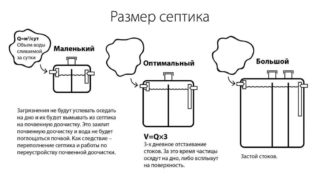 When constructing a cesspool, its volume should be correctly calculated. The larger it is, the longer the interval for pumping sewage. For a family of three people dig a hole at the rate of at least two cubic meters of liquid waste.
When constructing a cesspool, its volume should be correctly calculated. The larger it is, the longer the interval for pumping sewage. For a family of three people dig a hole at the rate of at least two cubic meters of liquid waste.
The increase in volume is possible due to the conversion of the cesspool into a septic tank with overflow. An extension of one more well will be required - with a filter at the bottom or tight (depending on the type of main cesspool).
The problem may not only be in scope. Overflow causes an excess of fluid. Ways to dehydrate a simple cesspool depend on the reason for its filling:
- Bandwidth violation due to siltation of the bottom. Mechanical cleaning is necessary or regular use of biological products.
- Freezing of drains in winter, followed by thawing. Correct thermal insulation of the trunk will be required.
- The location of the pit without a bottom in the area with high groundwater. You have to replace the cesspool with a sealed container.
If there are no structural problems, but it is necessary to reduce the volume of liquid in the cell, use sawdust and peat.
The longer the cleaning of the cesspool is delayed, the more toxic gases are formed. This can be harmful. Therefore, cleaning measures should be carried out regularly.
